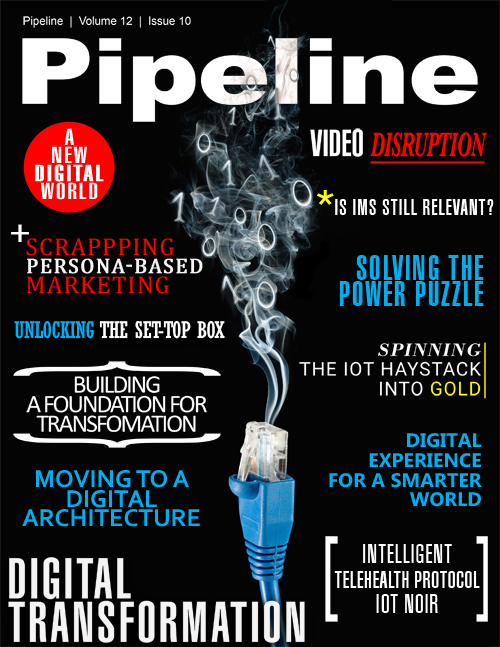A Digital World
As a provider, you did everything the same as last year. Resolved the issue. Met your SLA. But they are probably now comparing you to Uber. Why can't they tell me when a technician is dispatched? Why can't I see where they are on my phone? Or better yet, why can't I call the same person the tech does to resolve my problem the first time I call in? Today each customer experience is only as good as it is by comparison to that customer's best experience.
Basic sales and service is no longer basic. Attract, Engage, Convert, and Retain? Let’s consider the transitionals. (Yes, we know this is a simplification.) The transitional lifestyle intersects with different sales channels. So they want a consistent interface. The same portal on every access method, on every different device they use. But they also want it personalized to their taste. They are smart comparison shoppers. They will see a product they need, snap a picture on their smart phone, compare prices, and order from the brand who has gained their loyalty. They follow "the art of the deal" and have a propensity for well designed technology that provides value and efficiency to their lifestyle.
Now let’s consider the millennial. Market growth is around the millennial digital lifestyle. You might not like it, but you're going to have to accept it. The base market today (and probably tomorrow) is the millennial and it's only growing. By definition they have a smartphone. They learn fast. They can build or flip a market in just a few years (i.e. Facebook). Does anyone make money from SMS text message plans? This was a lifestyle change of millennials that first built a multi-billion dollar service provider market of per message charging. Then, with advent of some over the top apps, millennials killed text messaging plans in under two years. Marketing change is accelerating. There are no more cash breadbaskets, just transitory service innovations that tap high growth areas.
Millennials will research the reviews of every new product, [click] check and discuss with their social set on social media, [click] query for suppliers and load virtual carts on successive suppliers, [click] finally selecting the best intersection of price and delivery. Click, click, click. When they use the product or service, they report their experience on social media. Today’s transactions are becoming increasingly transparent, and increasingly important to do well.
The rate of change is increasing. This is now so acknowledged that it is an Internet Meme. Those born since 2000 exist on their smartphone and a connected tablet. These are absolutely necessary for happiness. The laptop stays in their room. It is their school work appliance, and with external screen, their gaming appliance and TV. Music is streamed from the cloud. Video, even TV-like services, is streamed from the cloud. They live in digital communication groups: established via social media postings for durable communications or via multi-media communication apps for instant communication. They segment their communications by interest groups: family is an online group, friends are in different groups segmented by what they do together. Location is not a factor for a virtual world-wide interest group of “I love X” connection friends. But location is immensely important for meal-sharing friends. Millennials are using their digital tools to build new applications to support their lifestyles, and service providers are faced with trying to keep pace with a new, large group of dynamic, and largely unpredictable customers.
The Smart Supplier
These categorization are, admittedly, overly broad and we need to please all these different customers to be successful. We must accommodate all these different touch points of interaction. Today’s buyers change communication channels several times an hour. They research brands. They compare prices. They check what their friend’s think. These shoppers expect retailers to recognize who they are and they want the same personalized experience online and in store.[3]
We want to provide personalization of service and develop brand loyalty. The customer experience needs to be trouble-free, smooth, intuitive and seamless. It is a market hot topic and we at Apptium call this the Omni-channel approach. Omni-channel provides the same look and feel, the same information, for consumers on all interaction sites. - one view of the brand over many interaction portals on many device platforms. Countless different indicators show that omni-channel interactions are more satisfying to customers. And this makes perfect sense.
The real difficulty of Omni-channel is not getting all the web sites on all the devices to look and feel the same. That is just table stakes. The really hard part, needed to realize the value of Omni-channel, is two-fold:
1. Polymorphic process. Workflows must accommodate the natural flow of the customer. We must coordinate all the multiple streams of interaction into one goal-directed process: user starts and their pauses, device and platform jumping, extended transactions. We do this by rapid implementation of multi-paths into our service product life cycle. Likewise in tracking individual customer behavior. This requires multi-threaded work flow that responds to alternate consumer behavior, different portals and different environments. This requires that resources be swappable into and out of work flows based on product, behavior, policy, and environment. This provides for the agile, or better, nimble organization.
2. Data aggregation. We must bring the data from multiple technology platforms together into an aggregated and complete picture of the customer interaction. Who bought specifically what bundle and how did they find it and finalize the transaction. This latter provides us the raw material for our analysis engines. Data must be classified, correlated, aggregated. Real-time reports must reflect today’s market conditions and correlate findings to corporate market goals. This information must be available to the customer interaction portals. With these building blocks of the data-driven organization, we can enable faster, more accurate marketing decisions based on fine-grained facts and not presumptions.



















